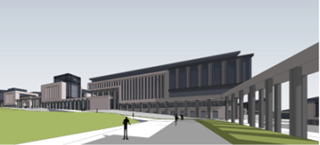Dongshan New Campus
Updated : 2015-07-30
 |
|
Overall planning
The university arrangement represents humanity and culture based on an integration of different forms of construction, to build a human-oriented, humanitarian, innovative, and ecological campus. The design takes advantage of the natural conditions to develop Shanxi University and build a top international university that combines eastern and western cultures and leads in the development of science and culture. |
|||||
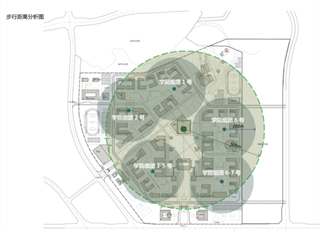 Functions
Education: we strive to meet the demands of a university and provide a site for education and research.
Urban: this is a significant cultural site for the city that provides a solid foundation for its cultural development and serves society.
Innovation: we will build an R&D site and cooperate with the world’s top enterprises and research institutes for the university’s advantage and will integrate production, study, and research for top urban cultural and scientific innovation.
|
Design Concept The campus design is meant to adjust to local conditions and ensure sustainable development with space for future development, with one plan, leeway, and implementation by stages. We will build a unique campus that integrates Chinese and Western culture and harmony between man and nature. We will run the university openly, provide interdisciplinary space and serve the city. We will focus on the relationships of the environment, meeting the needs of a modern urban campus, under the plan. The aim is to build a digital, intelligent campus. We respect Shanxi University’s history and dream of building a campus where Chinese and Western cultures meet, with Western architecture and yards, and Chinese streams and gardens. We will take advantage of the scientific research and talent of the university to contribute to local economic development, for an industry-university-research-community university. 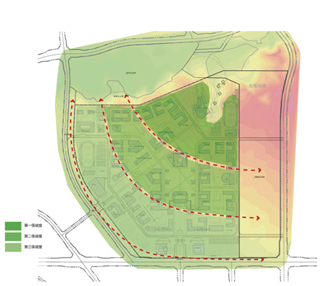 |
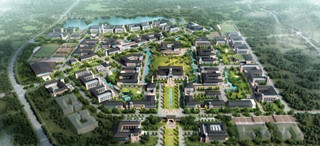 General conception People-oriented The campus is being reworked to fit the needs and requirements of teachers and students alike, instead of the older way of separating the various functions. 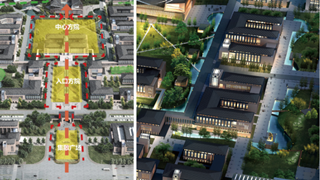 Walkable
By reworking the three usual sections of teaching, living and sports, the campus will have “groups”, each with its own dormitories and teaching buildings, but a distance between them of no more than 200 meters, meaning the students can reach any destination on foot easily. The libraries and other teaching buildings will be near three “groups”, with a no more than 500-meter distance in between.
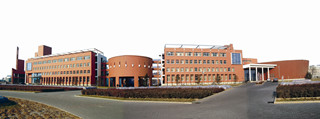 |
|||
|
Characteristics Ecological Campus-Having a design that is ecologically sound is a vital part in the project characterized by four aspects -- environmental protection, building efficiency, eco-friendly materials and controlled energy consumption. Protecting the ecology and environment-The project calls for the construction work to make proper use of the terrain with different elevations, keeping the cost of the work at a minimum, and protecting nature. By letting the construction follow the natural landforms and scenery, there can be a great improvement on the natural and environment. |
|||||
|
Campus arrangement The campus layout has a primary axis and a secondary one with various functional areas along the axis. It has a bus and taxi stop in front of the school gate, rectangular yards and quadrangles, with each and every inch of the main axis laid out rationally. The secondary axis is a pragmatic, smooth traverse of the campus. The two axes have three main teaching areas, sharing the same fascinating landscape. Walking around the campus makes you feel that you are encountering a traditional Chinese scholar who is knowledgeable and gentle. The aim is to build a digital, intelligent campus. We respect Shanxi University’s history and dream of building a campus where Chinese and Western cultures meet, with Western architecture and yards, and Chinese streams and gardens. We will take advantage of the scientific research and talent of the university to contribute to local economic development, for an industry-university-research-community university. |
Layout: one core, two axes, three clusters One core-The core is the central area of the campus, with a quadrangle for student leisure, club activities and exhibitions to enrich and improve the quality of life. it contains the library and teaching building surrounded by sloping fields and grassy areas. Two axes-There is an axis for buildings in a liner arrangement, from the square at the entrance to the school, to the office building, history museum, library and teaching buildings. There is also a green belt axis that connects the academic exchange center, teaching building, library, student center and assembly hall, reflecting the scientific spirit, the search for truth and enthusiasm. Three clusters-These contain eight institutes, each with its own teaching buildings and dormitories, as a way to separate pedestrians from vehicles and ensure proper walking space, connected by greenways and beautiful scenery to represent the humanity of traditional Chinese culture. Shanxi University was established by Richard Timothy from Britain and Tsen Chun-hsuan, a provincial governor, as the Shanxi Grand School, with a Western Learning House and Chinese Learning House. The history of Shanxi University is preserved in the new construction project, which will combine the rationality and calm of the West with the sensibility and romance of the East. |
Design Humane campus Shanxi University was established by Richard Timothy from Britain and Tsen Chun-hsuan, a provincial governor, as the Shanxi Grand School, with a Western Learning House and Chinese Learning House. The history of Shanxi University is preserved in the new construction project, which will combine the rationality and calm of the West with the sensibility and romance of the East. Axes and patios Universities in the Western pay attention to axes and squares, which represent a rational and national spirit. The first president of Stanford University explained at a ceremony that, “The long corridors and grand pillars are also part of the education. Every stone in the quadrangle can teach students to be respectable and honest.” That is how the environment can influence people and the combination of colonnades and quadrangles embody the grandness of the campus and represent the rationality of a Western college. The schools of traditional Chinese culture pay attention to mountains and rivers, which stand for nature, unity, culture, and harmony in the Eastern spirit. So, the patios of schools and dormitories, and the waterscape and plants all contribute to the humanity of the campus. This campus represents the diversity of the contemporary university through a combination of East and West. |
|||

